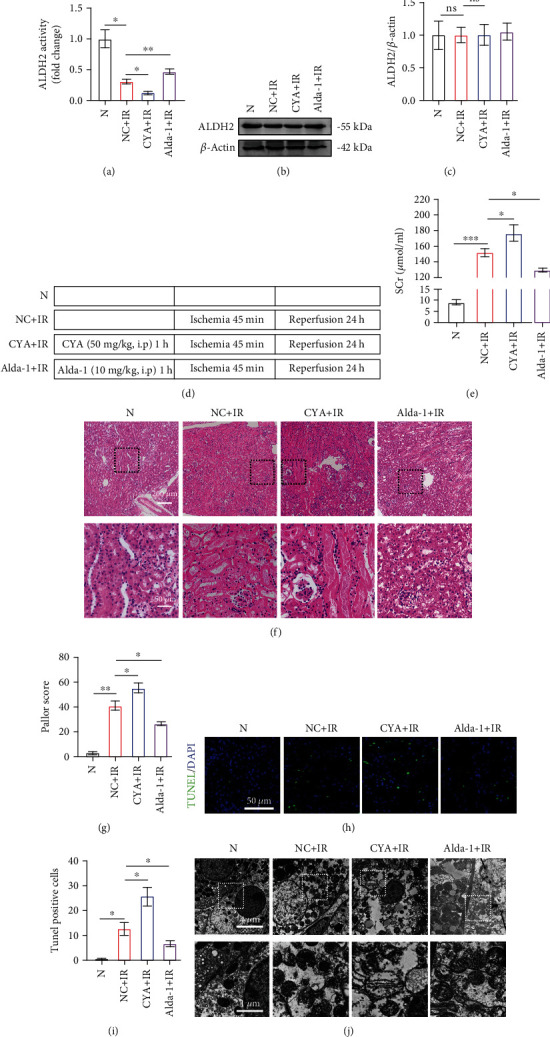Figure 5.

Activation of ALDH2 alleviates kidney ischemia–reperfusion injury, while inhibition aggravates the injury. WT mice were pretreated with solvent, CYA, and Alda-1, followed by kidney ischemia for 45 minutes and reperfusion for 24 hours. (a) Kidney lysates from WT mice after medical preconditioning were subjected to enzyme assay for ALDH2. n = 3. (b) Kidney lysates from WT mice were subjected to western blot analysis for ALDH2. n = 3/group. (c) Western blot analysis for ALDH2 protein in kidney samples from each group. n = 3/group. (d) Schematic diagram of Alda-1 and CYA preconditioning with ischemia–reperfusion (e) Serum creatinine (SCr) were measured after 24 h of reperfusion. n = 3. (f) H&E staining showed the injury of renal tubular epithelial cells and accumulation of red blood cells. Scale bar: 200 μm, 50 μm. (g) Paller score was performed using a semiquantitative damage assessment of renal tubular epithelial cells for each sample. n = 3. (h) Representative images of TUNEL staining (green) and DAPI (blue). Scale bar: 100 μm. (i) The percentage of TUNEL staining-positive cells in the total cells in the random field. n = 3/group. (j) Morphology of renal tubular epithelial cell was observed under TEM. n = 3/group. Scale bar: 20 μm, 10 μm. Data are presented as the mean ± SD. ∗P < 0.05, ∗∗P < 0.01, and ∗∗∗P < 0.001 by t-test.
